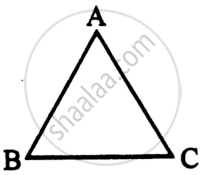Advertisements
Advertisements
प्रश्न
Calculate the maximum kinetic energy of photoelectrons emitted by a metal (work function = 1.5 eV) when it is illuminated with light of wavelength 198 nm.
उत्तर
According to Einstein's photoelectric equation,
`"E"_k = hv - w = (hc)/lambda - w`
Here h = 6.6 × 10-34 Js
c = 3.0 × 108 ms-1
λ = 198 × 10-9 m
w = 1.5 × 1.6 × 10-19 J
`therefore "E"_k = ((6.6 xx 10^-34 xx 3.0 xx 10^8)/(198 xx 10^-9) - 1.5 xx 1.6 xx 10^-19)`J
= (10 × 10-19 - 2.4 × 10-19) J
= 7.6 × 10-19 J
APPEARS IN
संबंधित प्रश्न
Find the wave number of a photon having energy of 2.072 eV
Given : Charge on electron = 1.6 x 10-19 C,
Velocity of light in air = 3 x 108 m/s,
Planck’s constant = 6.63 x 10-34 J-s.
State two important properties of photon which are used to write Einstein’s photoelectric equation.
The work function for a metal surface is 2.2eV. If the light of wavelength 5000Å is incident on the surface of the metal, find the threshold frequency and incident frequency. Will there be an emission of photoelectrons or not? (c = 3 x 108 m/ s, 1eV = 1.6x10-19 J , h = 6.63 x 10-34 J.s.)
According to Einstein’s model minimum energy needed for the electron to escape from a metal surface having work function ϕ0, the electron is emitted with maximum kinetic energy, Kmax = ______.
According to Einstein’s model, the threshold frequency for a metal having work function ϕ0 is given by _________.
Which of the following graphs correctly represents the variation of maximum kinetic energy (Ek) of photoelectrons with the frequency (𝜈) of the incident radiation?
The slope of frequency of incident light and stopping potential for a given surface will be
The emission of electron is possible
(i) A ray of light incident on face AB of an equilateral glass prism, shows minimum deviation of 30°. Calculate the speed of light through the prism.

(ii) Find the angle of incidence at face AB so that the emergent ray grazes along the face AC.
How does stopping potential in photoelectric emission vary if the frequency of incident radiation decreases?
